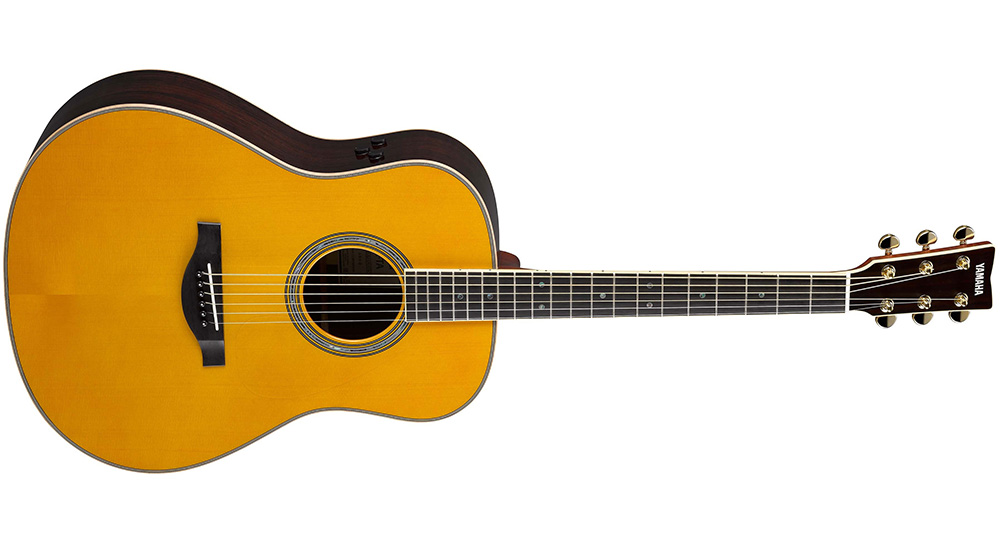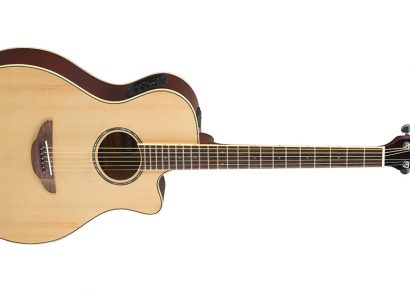At first look at the Transacoustic guitars doesn’t give any indicators of unusual tech wizardry. In fact, they look like typical acoustic guitars and, give them a strum, and they sound like normal acoustic guitars. Even inspecting a little further it’s hard to pick anything out of the ordinary, with an end pin jack for plugging the guitar in as a semi-acoustic and a control panel on top of the guitar. Look a little further and you’ll see the controls however are lineout volume, reverb and chorus – not your standard fare. Peeking inside the soundhole and you can see the control panel unit, which looks a little more involved than usual, and then as you peer further down towards the end of the guitar you’ll notice a unit Yamaha refers to as an actuator. It’s this system that creates both chorus and reverb effects by vibrating and sending vibrations through the guitar and into the air without the need for added amplification and effects. Of course you can also use the guitar as a semi-acoustic and plug it in too if needed.
A dreadnaught styled guitar, the FG-TA is made from spruce, mahogany, rosewood and nato and comes with a gloss natural finish with a matte finish on the neck. Colour-wise the range includes the Natural Vintage Tint of our demo model as well as Brown Sunburst and Black. Acoustically this dreadnaught is big and clear with lots of body – great for strumming big open chords or open string licks.
More of a concert body shape, the FS-TA takes a slightly smaller form. Again, spruce is used for the top with mahogany back and sides. I loved the smaller bodied look and feel of the guitar and a range of finishes are available if that’s your thing. Punchy with lots of projection, the FS-TA is also great for strumming and belting out big chords but is a nice option for pickers and fingerstyle players. I was impressed with the volume of the instrument and the neck isn’t super thin but definitely isn’t a baseball bat.
The three controls are clearly marked on the Transacoustic guitars, so when using the instrument acoustically you obviously keep the lineout volume at zero. Two reverb variations are available, being room and hall, with the incremented design controls allowing you to go from minimum to max with the room setting and then continue onto the min to max for hall in the one control. Chorus is just the one setting with the dial controlling the overall level of the effect. Sound-wise the verbs are handy and can go from subtle, for adding a little air, to very noticeable. The extra body and shimmer really feel like you’re playing in a big room and consequently make you play a little differently. Add some chorus and you get added width and space; the whole dial is workable too, depending on your preferences, and is more on the tasteful side rather than super huge ‘80s chorus.
Overall it’s an interesting concept that is fun to play around with and will no doubt cater to players that want to check out acoustic effects without the need for extra gear. Importantly, these guitars are good players acoustically too, meaning it’s not completely about the in-built effects but that they add some extra sweetness to the deal.

